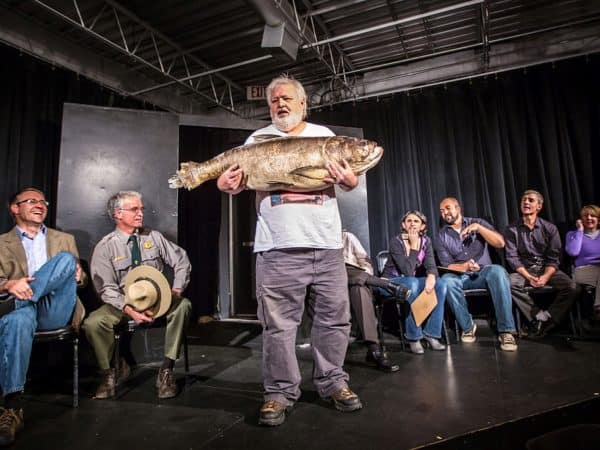

With the news that volunteer invasive species monitors in Quebec recently caught a 29 kilogram Asian grass carp in the St. Lawrence River east of Montreal, Canadian authorities are now bracing for a northern assault by Asian carp species, which have already wreaked havoc in the United States on waterways connected to the Mississippi River and are currently threatening to impact recreational and sport fishing in the Great Lakes.
The one-metre-long, 29 kg female Asian grass carp was caught by near Contrecoeur, Quebec, about 70 kilometres east of Montreal, provoking provincial and federal fisheries officials to begin intensive fishing up and downstream from where the fish was caught to find out if there are more Asian carp in the area.
“It is certainly a significant threat,” says Michel Legault, biologist with Quebec’s department of forests, wildlife and parks. “They take pretty much all of the habitat available, which means the native species are pushed out, or replaced, by these introduced species.”
Since first arriving in North America in the 1970s -fish farmers in the southern U.S. imported the fish to control weeds- the Asian carp species have made their way into the Mississippi River system and taken over ecosystems in many of its tributaries, mostly due to their voracious appetites and high reproduction rates.
“They get so big that after a year or two of existence, they have no predators because they are too big to be eaten by other fish-eating species,” says Legault.
Officials in the U.S. and Canada are currently testing out best practices for keeping the fish from establishing a toehold in the Great Lakes and threatening its $7-billion USD fishing industry, a problem that fisheries experts have seen on the horizon for some time now.
The Canadian federal government has put forward $1.7 million (Cdn) over the next three years to work on keeping the Asian carp from the Great Lakes and St. Lawrence River, and in April, the joint U.S. and Canada Asian Carp Regional Coordinating Committee (ACRCC) released its action plan outlining its strategies -backed by $17.5 million USD in Great Lakes Restoration Initiative funding.
The plan calls for increased efforts for detecting Asian carp in its various life stages and development of new techniques and methods to prevent the introduction and spread of the fish into the Great Lakes, such as using electric fencing, netting and even pheromones to control the carp’s development.
“Just as Asian carp continue to move and evolve, so does our fight against them,” says Cameron Davis, co-chair of the ACRCC and Senior Advisor to the Administrator at the U.S. Environmental Protection Agency.
A new study from the University of Illinois and the U.S. Geological Survey shows that the movement of Asian carp can be controlled by infusing water with carbon dioxide. Researchers found that two species of Asian carp, the bighead and the silver carp, avoided areas in a research pond infused with plumes of CO 2 , a promising result, says Michael Donaldson of the University of Illinois and lead author of the study. “These fish responses provide evidence that CO2 could be used as a tool to deter the movement of bighead and silver carp. The results are encouraging because there is a need for additional methods to prevent the entry of Asian carp into the Great Lakes.”
Leave a Reply
You must be logged in to post a comment.



 Share
Share Tweet
Tweet Share
Share




Comment